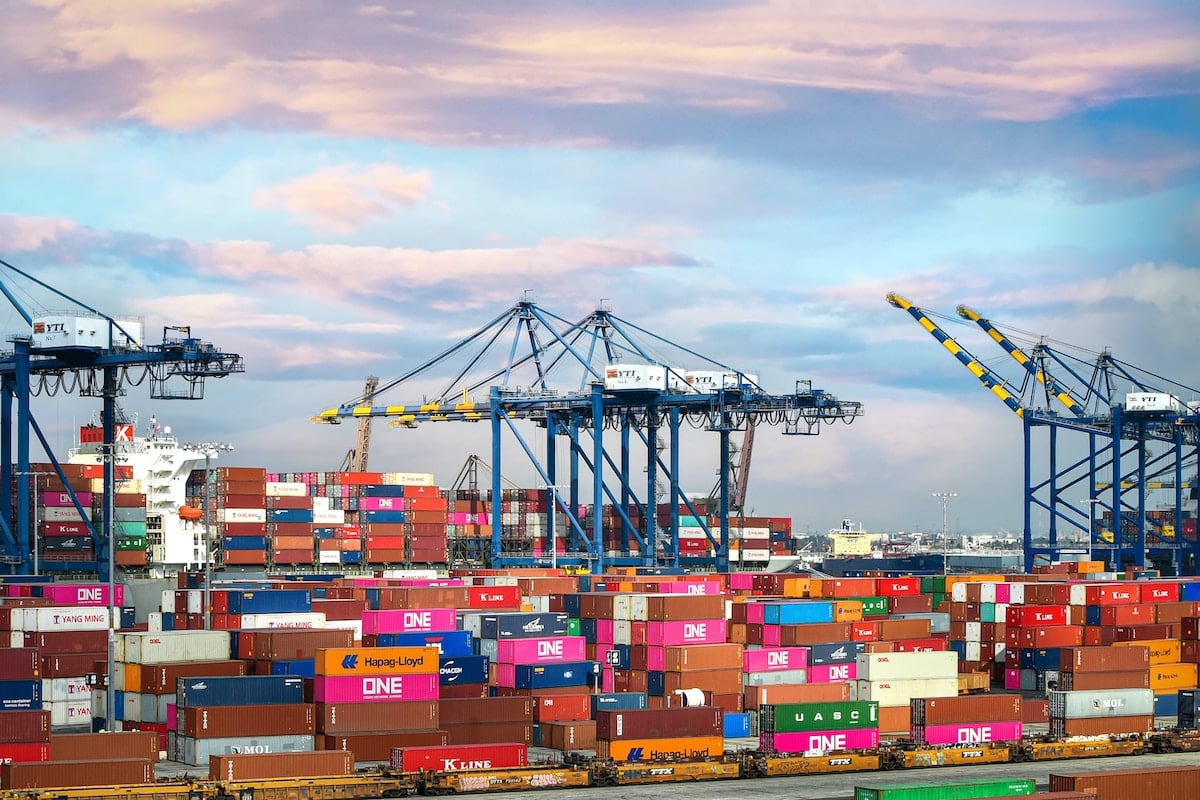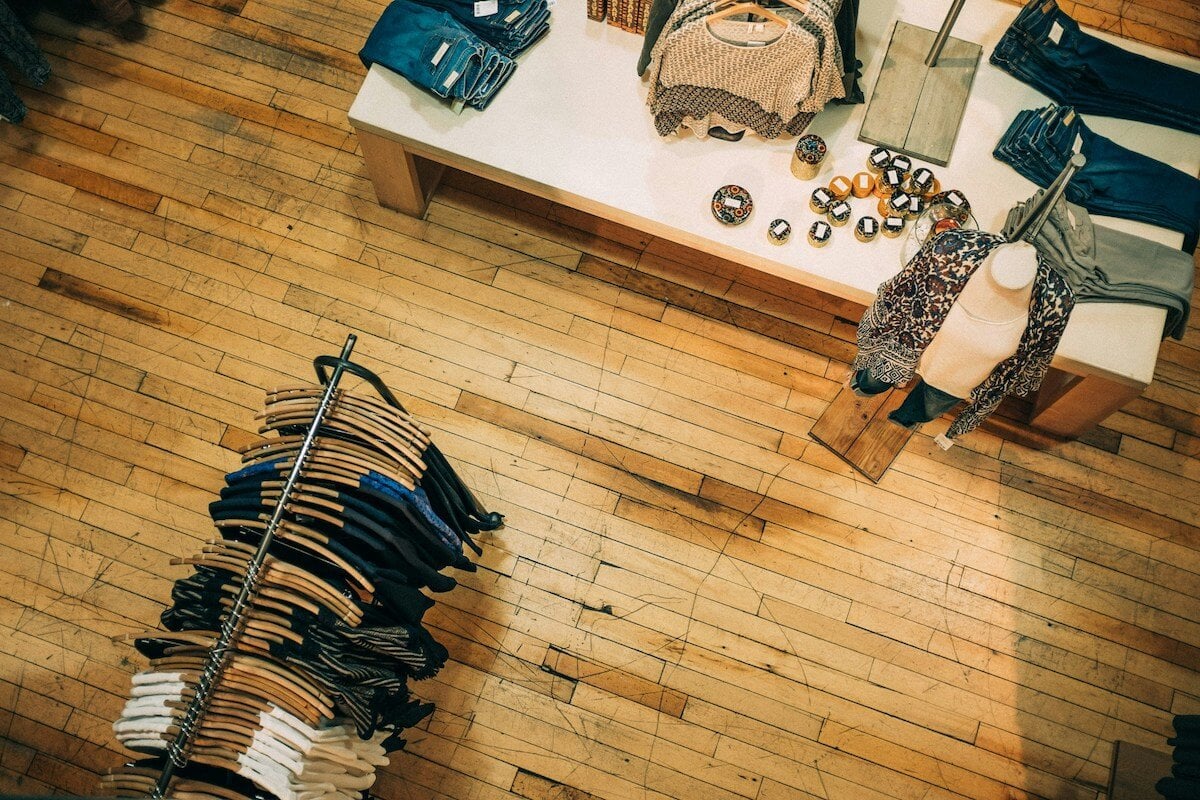
Dropshipping is a retail fulfilment method whereby an ecommerce store sells a product, but doesn’t actually hold the stock. Instead, it’s packed and shipped by another company, and the retailer never comes into contact with the products — they’re more of a middleman.
On this page
- What is a dropshipper?
- So who actually ships the order?
- Pros & cons of dropshipping
- Dropshipping in the wild: John Lewis
- Starting an ecommerce dropshipping business
What is a dropshipper?
In a dropshipping supply chain, ‘dropshipper’ is the term given to the party that receives the order, rather than the third party that fulfils it. But that doesn’t mean they all have exactly the same role.
So who actually ships the order?
Who processes and ships the order depends on your products and setup:
Sometimes the manufacturer ships the order
Some manufacturers offer fulfilment options. So as a buyer, the same company that made your item may be shipping it to you — even if you made the purchase on another site entirely.
If we think about building a dropshipping supply chain that’s optimised for profit, this is as good as it gets. Only two parties are involved in making the sale, so everyone keeps a good cut. But it’s not always practical…
Sometimes a wholesaler or distributor ships the products
There are a number of reasons why another party might be involved as the dropship supplier. The manufacturer may not be set up to be a dropship supplier, or may not operate in all countries (so the wholesaler or distributor seizes the chance to open the products to a new market).
In these cases, the wholesaler or distributor buys stock directly from the manufacturer. From there, it’s the same — you process the payment on your site, and pass the information to the wholesaler or distributor, and they ship the product to the end customer.
📚 Find out more: Wholesaler vs distributor: What’s the difference?
Pros & cons of dropshipping
Dropshipping hasn’t historically had the best reputation. For many, the word ‘dropshipping’ is synonymous with digital nomads looking to make a quick buck by running paid ads for trending products, and having them shipped direct from the manufacturer.
People made a lot of money with these business models, but there are plenty of cautionary tales from that time, too. And this ‘get-rich-quick’ side of dropshipping has largely dried up now, as people flocked to the low barrier business model, and margins became too squeezed.
But for actual ecommerce businesses looking to streamline or scale up their supply chain, dropshipping is often a logical next step. And when you work with trusted partners, the process can be so seamless that the end customer often won’t be aware the product hasn’t been sent from the site they purchased it from. In fact, 23% of all ecommerce orders are fulfilled using dropshipping.
Advantages of dropshipping:
1. Opportunity to scale quickly
If you’re working with a dropshipping supplier, it’s much easier to scale, as you don’t need to worry about finding extra space to store products, or spending extra time packing them. You also don’t need to front the money to pay for more stock.
So if you get a lot of your customers via paid ads, you could double or even triple your spend from one week to the next, knowing that the orders can be fulfilled without an issue.
2. You can focus on what you’re good at
Is packing and shipping orders an effective use of your time, or your team’s time? What could you/they have achieved with that time back?
3. It's a growing fulfilment method
Dropshipping isn’t a new idea.But as an ecommerce business, this works in your favour; more manufacturers will offer this, and third party dropshipping suppliers will be competitive.
4. You can start a business for less
While dropshipping is a great way to scale your ecommerce business, it’s also a great way to start one for less. Test the waters by starting your ecommerce business on the side, without having to invest a lot upfront to buy the stock.
Downsides of dropshipping:
1. You'll have a lower profit margin
Outsourcing the fulfilment of your orders means another person taking a cut of your profit. You’ll have to pay close attention to your numbers to make sure you’re driving a high enough volume of sales for this to make sense for your business.
2. You lose control over the packing & shipping
While you can do your best to pick a reliable dropshipping supplier, issues with how orders are packed and when they are shipped can arise. This can be frustrating when you have to deal with the fallout, but weren’t the ones to make the mistake.
3. No chance to check over the products
As a business owner, you set high standards. But with a dropshipping model, you probably won’t get to see the products you’re shipping out. This could result in substandard products being sent out to customers, and/or missing the chance to return them to the manufacturer.
Dropshipping in the wild: John Lewis
John Lewis is a department store which sells multiple different brands alongside its own homeware and fashion lines. In the case of most brands, John Lewis buys and holds this stock, assuming responsibility for deciding what will sell (and how much), and packing and shipping the orders.
But when you shop for art prints, the setup is slightly different. You’ll notice the delivery time jumps up to 10 days, rather than the new next day click and collect option. This is because East End Prints is responsible for packing and shipping this order, rather than John Lewis.
This option makes sense for both parties because of the customisation options available for each print; you can choose the size, and type of frame.
While some brands would rather the end customer doesn’t know their product was sent by another company, John Lewis is transparent about this, pitching it as a way to get a higher quality product (framed by the art experts). The product also arrives in East End Prints packaging.
Starting an ecommerce dropshipping business
If you haven’t yet started your ecommerce business, and you’d like to test the waters with some dropshipping products (which the manufacturer will ship for you), there are some dedicated places you can look to when sourcing these items. Oberlo is a popular option and, given it’s owned by popular ecommerce store builder, Shopify, the two platforms mesh together very smoothly.
FAQs
Are dropshipping sites and marketplaces the same?
While an ecommerce website that dropships its orders and marketplaces (like Etsy and CREOATE) can have a lot in common, there are a few key differences — namely who is the seller of record, and who controls the prices of the products. With dropshipping, the ecommerce site (merchant) is the seller of record, and also controls the pricing. With a marketplace, this falls to the supplier of the goods (the party who holds and ships them). Sometimes the lines are a little blurry, but that’s generally a good way to tell the difference.
What’s the difference between dropshipping and order fulfilment?
Order fulfilment companies are also third party companies who store stock, and will pack and ship orders you’ve processed to the end customer. The difference is who owns the stock.
With dropshipping, you, the merchant, don’t own any stock. Nada. Not a box.
With order fulfilment, you own the whole lot — you’re just using another company to store and ship it for you. You’re in charge of managing your own stock levels, and putting in the money to stock up in the first place.
Is dropshipping legal in the UK?
Yes, dropshipping is completely legal in the UK. But if you are selling products made overseas, you’ll need to check that these meet any legal standards required by the UK in the same way you would if you were selling them in your own shop.
Not registered with CREOATE yet? Sign up now and shop wholesale with us today.
Browse Popular Categories at CREOATE: Wholesale Jewelry | Wholesale Gifts | Wholesale Stationery | Wholesale Beauty Products | Wholesale Mugs | Wholesale Homeware | Wholesale Pet Supplies | Wholesale Gourmet Food | Wholesale Garden & Outdoor | Wholesale Baby & Kids Products







